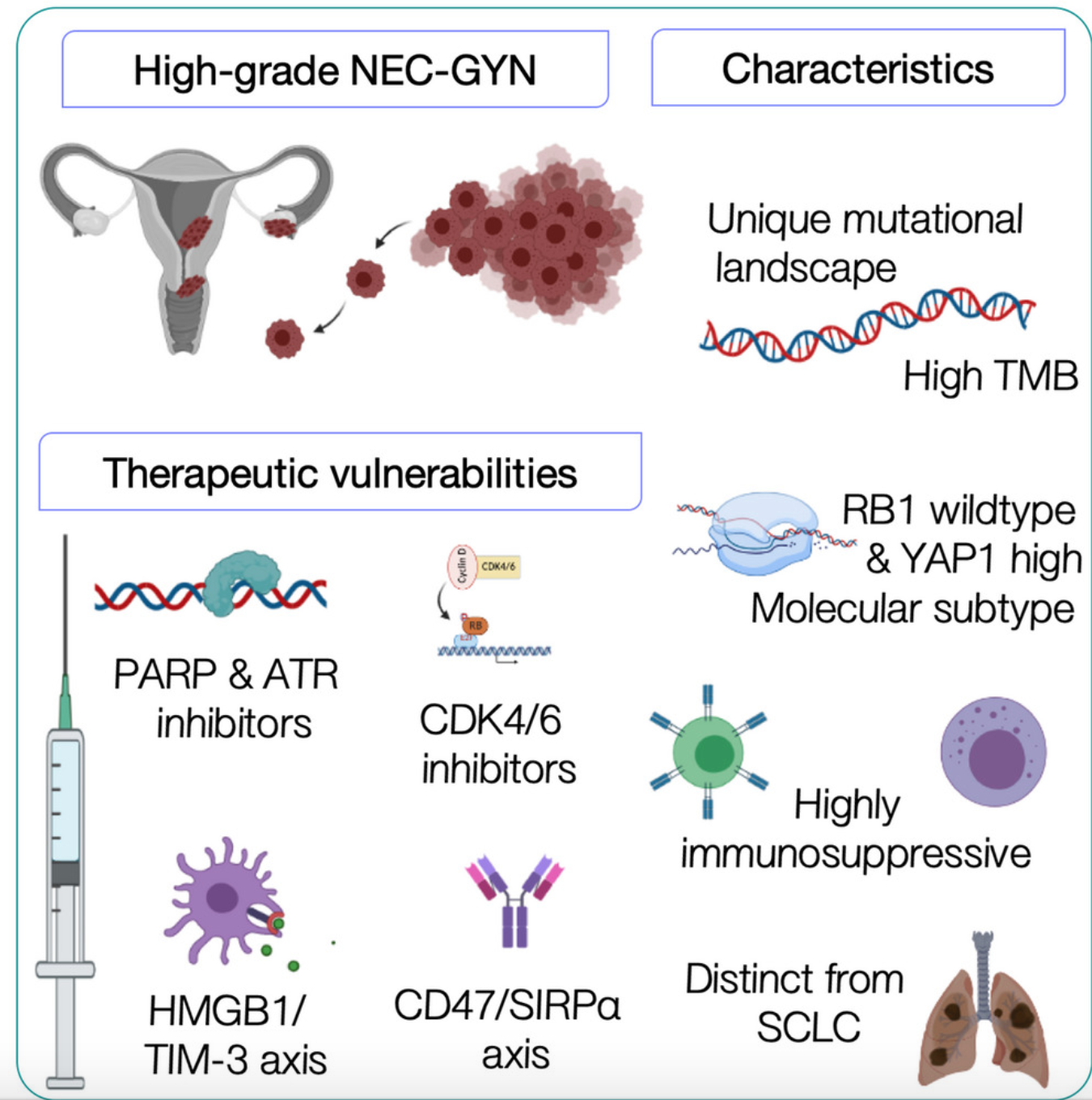Dissecting the molecular profile of a rare gynaecological cancer

High-grade neuroendocrine carcinoma of gynaecologic origin (NEC-GYN) is a rare and aggressive form of cancer. If found in the cervix, the disease is more likely to progress into an advanced stage and perhaps spread, coincident with a survival rate of less than 10%. A lack of a clear understanding with regards to the biological pathways gone awry in cells, this disease is assumed to be similar to small cell lung cancer because the latter has been the typical example of neuroendocrine carcinomas. Thus NEC-GYN is treated similarly, resulting in limited potency of treatment options. A recent Research article in Molecular Oncology [1] aimed to catalogue mutations occurring in the endometrium, ovary and cervix from 12 patients presenting with NEC-GYN tumours using whole exome and RNA sequencing.

A cartoon depicting origin of NEC-GYN, unique characteristics, and therapeutic opportunities. Image
Mahdi et al [1] found that small cell lung cancer samples are characterised by frequent mutations in TP53 and RB1 genes in 88.9% and 75.7% cases whereas the same genes were shown to be mutated in 29% of NEC-GYN samples. The recruitment of neutrophils, a type of white blood cell that fights infections, into any tumour is often associated with poor patient prognosis. The presence of neutrophils was greatly increased in NEC-GYN samples compared to small cell lung cancer. Morever, NEC-GYN samples displayed a reduced expression of the HLA-A/B receptors capable of presenting tumour-specific antigens to tumour-reactive lymphocytes, a different a type of white blood cell. Finally, NEC-GYN was shown to fall within a category of small cell lung cancer sub-type characterized of YAP1 gene expression that is associated with chemoresistance development. Taken together, these findings illuminate some of the molecular characteristics of NEC-GYN and better document how this disease differs from small cell lung cancer. Importantly, this study opens up avenues towards future efforts directed at more precise treatment options.
- Mahdi, H., Joehlin-Price, A., Elishaev, E., Dowlati, A. & Abbas, A. (2021) Genomic analyses of high-grade neuroendocrine gynecological malignancies reveal a unique mutational landscape and therapeutic vulnerabilities. Molecular Oncology. n/a. https://doi.org/10.1002/1878-0261.13057





Join the FEBS Network today
Joining the FEBS Network’s molecular life sciences community enables you to access special content on the site, present your profile, 'follow' contributors, 'comment' on and 'like' content, post your own content, and set up a tailored email digest for updates.